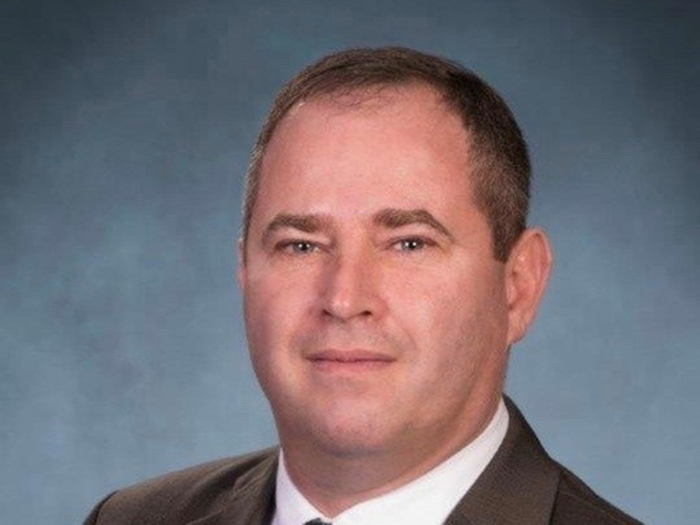WTW’s Lauren Finnis Discusses the Evolution and Future of Commercial Insurance

Lauren Finnis, head of Commercial Lines Insurance Consulting & Technology at WTW, sat down with Risk & Insurance at the RISKWORLD conference to discuss the integration of AI in the insurance industry, the management of novel risks, and the future of commercial insurance.
Risk & Insurance: What led you to your current role at WTW, and how does your background inform your approach?
Lauren Finnis: The majority of my career has been in the insurance space, always in roles where I use data and analytics to drive customer and broker relationships. I started in underwriting and then moved into managing relationships with large global brokers when they had just begun licensing data to insurers, but few knew how to leverage it effectively.
I focused on teaching teams how to have more data-driven relationships. While relationships are essential in this business and unlikely to disappear despite advancements in AI and tools, being data-driven allows for smarter prioritization and time management.
After spending a significant portion of my career in distribution, aiming to change the traditional model, I joined WTW almost a year ago. Now, I lead a practice that consults for insurers across various areas, including pricing, predictive modeling, product development, claims, distribution strategy, and market entry. We also license technology to support insurers throughout the actuarial process.
R&I: What strategies would you recommend for companies looking to embrace AI and other modern technologies while effectively managing associated risks?
LF: First and foremost, insurers should treat AI and Gen AI risks like any other risks, going back to the principles of enterprise risk management models. The initial step is to assess, which may require bringing together a cross-functional team of leaders to identify where AI can be leveraged, where vendors might be using AI, and where there are external AI risks.
Once the risks are identified, the next step is to analyze the potential impact, determine risk tolerance, and explore mitigation strategies. This includes reducing the severity and occurrence ratios and implementing monitoring systems. It’s also crucial to understand how insurance coverage applies to these risks and where the company is assuming risk.
Secondly, education is a vital component. While college students may be taking courses on AI, those already in the workforce might not have the same exposure. Just as companies conduct annual cyber assessments to prevent phishing, they should consider similar training for Gen AI and new tools. This training should cover what should and shouldn’t be input into large language models, how to craft effective prompts, and how to leverage these tools in a lower-risk manner.
One approach is to license or create a company-specific version of a large language model. While not always economical, this allows for monitoring employee usage, promoting innovation, and managing risk. Encouraging employees to use a specific tool enables activity tracking without completely blocking access.
Lastly, encourage experimentation. Innovation often comes from the people performing the tasks, as they are the most motivated and connected to figure out how AI can improve their work. Whether working independently or pairing data scientists with practitioners, avoid working in a vacuum. With proper education, employees can drive innovation and improve efficiency throughout the business.
R&I: What is the best approach for managing novel risks, and how does it compare to traditional risk management practices?
LF: The best approach for managing novel risks is to apply the same traditional risk management lens that we have used in the past. Even though these risks may seem new or unfamiliar, the fundamental principles of risk management remain the same.
For instance, when PFAS emerged as a new risk, our brokers made recommendations that closely resembled those for other risks we had faced before. The key is to be proactive in telling your own story and controlling the narrative surrounding your risk management efforts.
Nobody can tell your story better than you can. This advice holds true for any type of risk, whether it’s a novel one or a more familiar one. By applying tried-and-true risk management practices and being transparent about your approach, you can effectively navigate even the most complex and unfamiliar risk landscapes.
R&I: What aspect of Generative AI’s future excites you the most, and what do you see as the biggest potential concern?
LF: I’m excited about the broad application of Generative AI to improve efficiency. In risk management and training, we can leverage these technologies to create engaging content more efficiently. Rather than having someone manually create training modules, much of it can be automated and even gamified.
I’ve seen impressive game-based training modules created using Generative AI. In today’s hybrid and remote workforces, it’s challenging to implement effective training. Gamified versions can enforce learning and improve retention. While human oversight and refinement will still be necessary, if the AI tool can handle 80% of the work, leaving the remaining 20% to humans, it will be quite impactful.
On the flip side, I worry about the impact on training the next generation of talent. Tasks like note-taking, which many people used to cut their teeth on and gain context, might be outsourced to AI. Our cost models may favor AI over people, but then how will people learn?
We’ll need to be more intentional about training and teaching. Looking at the future of underwriting, once we achieve an efficient balance between human and AI automation, the remaining tasks will be relationship management and complex judgment. While underwriters generally enjoy these aspects, doing them all day can be mentally exhausting.
R&I: You raise a valid concern about the potential for burnout in a society that often demands more productivity. How can companies address this issue and promote a healthier work-life balance for their employees?
LF: In our capitalist society, there’s a constant push for increased productivity, and I fear that this could lead to burnout. Even if my work involves deep thinking, discussions, and relationship management, the expectation might become 40 hours of this type of intense work, rather than recognizing the need for a more balanced approach.
Companies must actively address this issue to prevent employee burnout and promote well-being. This could involve setting realistic expectations, encouraging breaks and time off, and fostering a culture that values work-life balance.
Ultimately, organizations should recognize that employee well-being is essential for long-term success and sustainability. By prioritizing the health and satisfaction of their workforce, companies can create a more positive and productive work environment.
R&I: How have you seen the insurance industry evolve over the last decade, and what changes have been the most significant?
LF: The insurance industry has seen a significant acceleration in analytics over the past decade. As an industry that has always been analytical, trying to price and cover risk, the tools available have really advanced. This is particularly evident in the complex judgment required on the risk underwriting and broking side.
For complex accounts, we now have multiple data sources and angles, requiring the use of five different tools to analyze a single risk. While this is exciting, one of the big challenges in the coming years will be figuring out how to bring these tools together into cohesive frameworks. Without a clear starting point and with so many directions to look, integrating these tools will be crucial.
Another significant change, particularly in the US market, has been the acceleration of the Excess and Surplus (E&S) market. The legal framework has evolved, with lobbying groups successfully changing the laws around E&S. As a result, the E&S market has transformed from being a market of last resort to a market of creativity, allowing for bespoke coverage decisions, unique pricing, and innovative thinking.
R&I: What technologies are driving the biggest changes in the commercial insurance space now?
LF: In the commercial insurance space, we see significant investment in frontline technologies that support the underwriting and intake process. Insurers are focusing on automating submission intake, as the industry still largely relies on email and attached documents. Efforts are being made to read and transcribe these documents into systems without human intervention.
WTW is involved in this transition, working towards using APIs for brokers to send submissions and carriers to quote back. The goal is to move away from conducting billions of dollars of transactions through emails.
However, I believe the more impactful changes are happening on the back end, in the internal processes that are less visible. These areas are often underinvested in but have a significant impact on profitability. For instance, automating rate indications, especially in the admitted space, is crucial for insurers to keep up with regulators and obtain desired rates for their portfolios.
Delays in this process directly affect pricing and profitability.
R&I: What are some of the latest innovations in risk management that excite you?
LF: I’m excited about leveraging AI for better data in risk management. Historically, Risk Management Information Systems (RMIS) data has not been very robust, and risk managers often struggle to get the data they need.
However, by using AI tools, we can now add structure to unstructured data, capture it more effectively, and implement monitoring without overburdening teams. This allows for the automatic collection of data points that would otherwise require manual effort from people in the field, enabling risk managers to make more informed decisions.
Another significant challenge, especially in third-party risk management, is keeping track of the risks a company has contractually taken on or pushed off. It’s nearly impossible for a single person to maintain a comprehensive roster of these risks, particularly in large companies.
By implementing contract management tools and utilizing AI and natural language processing to scan and analyze the language in a database, risk managers can quickly assess their exposure and make more informed decisions. While not perfect, this approach is a significant improvement over manual methods.
R&I: What do you see as the key trends and developments in the insurance industry over the next 5 to 10 years?
LF: The insurance industry will continue its journey to find the optimal balance between human expertise, AI, and automation. However, given the industry’s risk-averse nature and slow pace of change, we may not reach that frontier within the next 5 to 10 years.
While there is a lot of excitement around generative AI, many companies have yet to complete their automation journey, which involves narrow AI applications. There is still significant potential for automation in areas such as bordereau processing in the delegated authority space, where humans manually transform and validate large datasets from various participants like program administrators.
It’s important not to overlook these low-hanging fruit opportunities in the midst of the hype surrounding generative AI. As we focus on equipping people for the complex judgment-based roles of the future, we need to provide them with better tools and comprehensive frameworks.
In the broking space, this means developing more comprehensive broking platforms that integrate carrier data and insights about their strengths and risk appetites. Similarly, for underwriters, we need to create unified underwriting workbench views that bring together valuation tools, risk engineering data, broker reports, past claims data, and similar risks in one place.
By providing professionals with a single, integrated environment to work in, we can help them navigate the evolving landscape and make informed decisions without being overwhelmed by disparate data sources and tools. &











